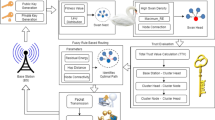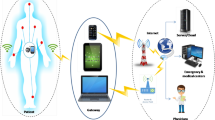Abstract
Prominent applications scenarios like military and commercial platforms mostly rely on wireless communications such as Wireless Sensor Networks (WSN), Mobile Ad-hoc Networks (MANET) and Vehicular Ad-hoc Networks (VANET). Based on the application scenario, the reliability of the nodes deployed has become more important for trust management evaluation. At the same time, trust management system should not be power killing, complex in terms of computation and processing capability. To convey a noticeable framework, we propose Collaborative Trust based Secure Routing protocol (CTSR) for observing direct and indirect trust values. Here we utilize two-way acknowledgement-based trust framework (2-ACKT) which requires lesser memory resources and minimizes the communication overhead. Our simulation setup for Mobile Adhoc Networks with 2-ACKT framework calculates trust value with both direct and indirect observations based on Bayesian inference and Dempster-Shafer Theory (DST) of uncertain reasoning approach respectively. Since the inception of DST for indirect observation in wireless networks trust values are effectively derived with data packets and control packets. The capability of DST to solve the problems with different reliability has flaws in certain areas where the nodes were subjected to disclose critical information like residual energy level and available bandwidth. And also common results derived from DST may lead to uncertain decisions. Considering all these factors we make few notable modifications in DST to enhance the security feature in 2-ACT.










Similar content being viewed by others
References
Refaei M, DaSilva L, Eltoweissy M, Nadeem T (2010) Adaptation of reputation management systems to dynamic network conditions in ad hoc networks. IEEE Trans Comput 59(5):707–719
Kurosawa S, Nakayama H, Kato N, Jamalipour A (2006) Detecting Blackhole attack on AODV-based mobile ad hoc networks by dynamic learning method. Int’l J Netw Secur 105(627):65–68
Yager R (1987) On the Dempster-Shafer framework and new combination Rules_1. Inf Sci 41(2):93–137
Zadeh L (1984) Review of a Mathematical Theory of Evidence. AI Magazine 5(3):81
Wei Z, Tang H, Yu FRR, Wang M (2013) Security enhancement for mobile ad hoc networks routing with OLSRv2. In: SPIE defense, security, and sensing. International Society for Optics and Photonics, pp 87550C
Konishi K et al (2005) Mobireal simulator-evaluating manet applications in real environments. 13th IEEE International Symposium on Modeling, Analysis, and Simulation of Computer and Telecommunication Systems. IEEE
Felix J, Joseph C, Lee B-S, Das A, Seet B (2011) Cross-layer detection of sinking behavior in wireless ad hoc networks using SVM and FDA. IEEE Trans Dependable Secure Comput 8(2):233–245
Anita X, Manickam JML, Bhagyaveni MA (2013) Two-way acknowledgment-based trust framework for wireless sensor networks. Int J Distrib Sens Netw
Zhang Y, Liu W, Lou W, Fang Y (2006) Securing mobile ad hoc networks with certificateless public keys. IEEE Trans Dependable Secure Comput 3(4):386–399
Lou W, Liu W, Zhang Y, Fang Y (2009) SPREAD: improving network security by multipath routing in mobile ad hoc networks. ACM Wireless Netw 15(3):279–294
Bu S, Yu FR, Liu XP, Tang H (2011) Structural results for combined continuous user authentication and intrusion detection in high security mobile ad-hoc networks. IEEE Trans Wirel Commun 10(9):3064–3073
Sun Y, Yu W, Han Z, Liu KJR (2006) Information theoretic framework of trust modeling and evaluation for ad hoc networks. IEEE J Sel Areas Commun 24(2):305–317
Khedher DB, Glitho R, Dssouli R (2007) A novel overlay-based failure detection architecture for manet applications. 2007 15th IEEE international conference on networks. IEEE
Cho JH, Swami A, Chen IR (2011) A survey on trust management for mobile ad hoc networks. IEEE Commun Surv Tuts 13
Changiz R, Halabian H, Yu FR, Lambadaris I, Tang H (2012) Trust establishment in cooperative wireless relaying networks. Wirel Commun Mob Comput. doi:10.1002/wcm.2271
Subramaniyan S, Johnson W, Subramaniyan K (2014) A distributed framework for detecting selfish nodes in MANET using Record-and Trust-Based Detection (RTBD) technique. EURASIP J Wirel Commun Netw 2014(1):1–10
MacDermott Á, Shi Q, Kifayat K (2015) Collaborative intrusion detection in a federated cloud environment using the Dempster-Shafer theory of evidence. Proceedings of the 14th European Conference on Cyber Warfare and Security 2015: ECCWS 2015. Academic Conferences Limited
Wei Z (2014) Security enhancements for mobile ad hoc networks with trust management using uncertain reasoning. Vehicular Technology, IEEE Transactions on 63(9):4647–4658
Author information
Authors and Affiliations
Corresponding author
Rights and permissions
About this article
Cite this article
Sargunavathi, S., Martin Leo Manickam, J. Design and Development of CTSR with Direct & Indirect Observations of MANET Applications. Mobile Netw Appl 22, 712–718 (2017). https://doi.org/10.1007/s11036-017-0843-8
Published:
Issue Date:
DOI: https://doi.org/10.1007/s11036-017-0843-8




